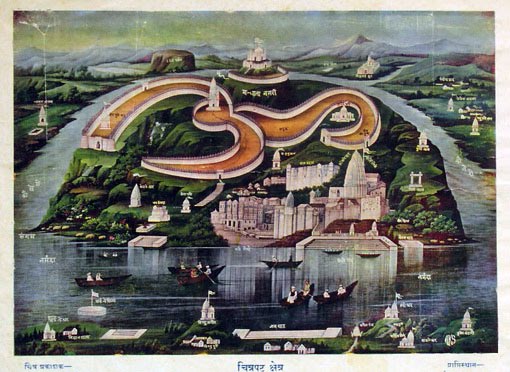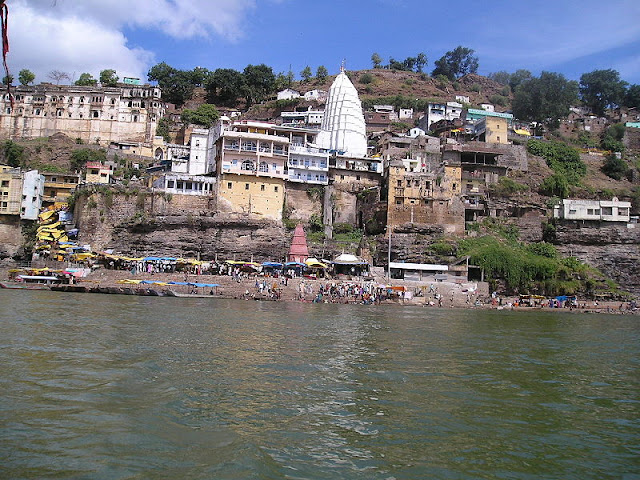Sawan or Shravan The holy month in India is started, During this month India offers numerous fair and festivals across the country. Every state has its own traditional festivals to celebrate, some of the monsoon festivals are Teej a fasting festival, Nag panchami, then Raksha Bandhan and Janmashtmi. Apart from these festivals, All Mondays of sacred holy month of Shravan is devoted to the worship of great God Lord Shiva. The holy yatra or march of Kanwariya also start during this sacred month and Pilgrims called Kanwariya, reciting Bol Bam can be seen at Land of Shiva and every other holy sites or holy places such as confluences of sacred rivers and at famous 12 Jyotirlingas of lord Shiva. The Holy men of India are also spotted during this month at various temples of Lord Shiva, As they are the true devotees of God of God’s Lord Shiva. Originally there were believed to be 64 jyothirlingas while 12 of them are considered to be very auspicious and holy. The famous 12 Jyotirlingas of God Shiva are spread all over India, Jyothi lingam means, Lord Shiva appeared in the form of light (Jyothi) lingam. Other famous temples of Lord Shiva are Amarnath, Bhojpur Shiva Linga Temple, Amareshwar temple Amarkantak, Murudeshwara, Shankaracharya temple Kashmiri, Lingaraj temple Bhubaneswar, Mukteswara temple, and great Kailasanathar Temple.
Somnath Jyotirlinga:
The Somnath Temple is located in the Saurashtra, on the western coast of Gujarat. Somnath temple,also known as the Shrine Eternal is considered to be the most significant and revered 12 Jyotirlinga temples across India The Protector of Moon God temple is destroyed six times and rebuilt six times,recently it was rebuilt in November 1947. The Aadi Jyotirling Shree Somnath Mahadev temple is dedicated to Someshwara, the Lord Shiva, with moon on his head.
 |
| Somnath Jyotirlinga Gujrat |
Mallikarjuna Jyotirlinga:
Sri Mallikarjuna Swamy Temple is located at Srisailam in Nallamala hills of Andhra Pradesh. The temple is situated in the town of Srisailam near the banks of Krishna river. Mallikarjun Jyotirlinga is one of the greatest shrines in India and it constitutes one of the 12 Jyotirlingam shrines of Lord Shiva. The temple in hill looks like a great fort and is also known for its treasure of sculptures, There are number of sculptures on the walls appear as a gallery.
 |
| Mallikarjuna Jyotirlinga Andra-Pradesh |
Mahakaleshwar Jyotirlinga:
The most famous Mahakaleshwar Hindu temples is situated in the holy and ancient city of Ujjain in the state of Madhya Pradesh. The most lively Shiva Temples of India is located on the side of the Rudra Sagar lake in heart of Ujjain city. Mahakaleshwar idol is also known as dakshinamurti, as its facing the south. This is only temple of lord Shiva among the 12 Jyotirlingas where the idol of Great God is facing the south. The holy temple which is credited with citations in the great works of Poet Kalidasa.
 |
| Mahakaleshwar Jyotirlinga Ujjain |
Omkareshwar Jyotirlinga:
Omkareshwar is a famous Jyotirlinga temple located is a holy island of Shivpuri in Maheshwar, Madhay Pradesh. This holy shrine of Lord Shiva is located at the convergence of Kaveri and holy river Narmada. One of the Dwadasa jyotirlingas is spread on the Mandhata hills in Vindhya Mountains of Madhya Pradesh. Shape of the holy island is looks like the holy symbol of Shiva “the Om”. There are two temples Omkareshwar and other one is Amareshwar, The Mamleshwar jyotirling is situated on other side of Narmada river. Narmada river’s hold one of the biggest dams project in India, Sardar Sarovar Dam.
 |
| Omkareshwar Jyotirlinga Madhya-Pradesh |
Kedarnath Jyotirlinga:
The kedarnath jyotirlinga temple,one of the holiest Hindu temples dedicated to Lord Shiva is located in Uttarakhand. The holiest pilgrimages for the devout Hindu is situated at the head end of the River Mandakini in the Garhwal Himalayas. Kedarnath temple is not directly accessible by road,a 14 km uphill trek from Gaurikund has to be cross to be reached here. The Temple is one of the four major sites in India’s known as Chota Char Dham, other three are Yamunotri,Gangotri and and Badrinath. Shri Kedarnath temple is open only between the end of April to Kartik Purnima, During the winters, the murtis (idols) from Kedarnath temple are brought to Ukhimath and worshiped there for six months. Image source: admirableindia.com
 |
| Kedarnath Jyotirlinga |
Bhimashankar Jyotirlinga:
Bhimashankar Temple Jyotirlinga is situated in the Sahyadri ranges near pune in Maharashtra. The ancient shrine of lord Shiva is one of the most famous pilgrim places in Maharashtra. Bhimashankar jyotirlinga temple is far away from the tumult of the urban life and wrapped in the congregations of the majestic western ghats. Bhimashankar, One of the oldest Shiva temple is surrounded by Buddha style carvings, dense forests of high hill ranges and home to rare species of flora and fauna.
 |
| Bhimashankar Jyotirlinga Maharashtra |
Vishwanath Jyotirlinga:
Kashi Vishwanath JyotirLinga temple is located in the oldest city of India, Banaras Uttar Pradesh. Kashi, Banaras now Varanasi is the holiest city of India and fully dedicated to the Lord Vishwanath. The city is situated on the bank of holy river the Gange and considered the most sacred place for Hindus. The Aarti is held in the temple five times in a day, the evening Aarti is called Ganga Aarti held every evening at Dasashwamedha Ghat.
 |
| Vishwanath Jyotirlinga Kashi |
Trimbakeshwar Jyotirlinga:
The Trimbakeshwar Jyotirlinga is located at the source of the holy Godavari river in the town of Trimbak, in the Nashik, Maharashtra. The Trimbakeshwar Temple is an ancient Hindu temple dedicated to Lord Shiva and is one of the twelve Jyotirlingas. Triambakeshwar owns spectacular distinction of the Jyotirlinga having three faces exemplifying Brahma, Vishnu and Maheshwara (Shiva). All other 11 Jyotirlingas have only Shiva lingam.
 |
| Trimbakeshwar Jyotirlinga Nashik |
Baidyanath Jyotirlinga:
The Baidyanath dham also known as Baba dham is the most sacred abodes of Shiva. One of the twelve Jyotirlingas is located in Deoghar in the tribal state of Jharkhand. Baba Dham temple located where the heart of Bhagwati Sati had fallen, so this place is also referred as Mahashakti peeth. It is believed that the Baidynath (Vaidyanath) Jyotirlingam in Deogarh is associated with legendary stories of Ravana and Lord Shiva. This shrine is very famous, as Kanwariya Offers holy water of river Gange to the Lord Shiva during the month of shravan.
 |
| Baidyanath Jyotirlinga Jharkhand |
Nageshwar Jyotirlinga:
The Nageshwar Jyotirlinga is believed as the first Jyotirlinga on the earth. The great Nageshwar Jyotirlinga is located near Dwarka, in the Gujarat state of India. Nageshvara Jyotirlinga is one of the 12 Jyotirlinga shrines of Lord Shiva mentioned in the Shiva Purana. This Nagaeshwara Jyotirlingam is facing south with the Gomugham facing east. There are three major shrines in India which are believed as identical to this Jyotirlinga, Those are the Jageshwar temple near Almora in Uttarakhand, the Nageshwara temple near Dwaraka in Gujarat, and the Nagnath temple in Aundha in Maharashtra.
 |
| Nageswar Jyotirlinga Dwarka |
Rameshwaram Jyotirlinga:
Rameshwaram is a religious town located in the state of Tamil Nadu. The Rameshwaram temple is dedicated to the Hindu god Lord Shiva and its one of the 12 famous Jyotirlingas of Lord Shiva. Amongst the 12 Lord Shiva Jyotirlinga, Rameshwaram is one of the most sacred shrines of Hindus in India. This place is one of the holiest places in India to Hindus and part of the Char Dham pilgrimage. Rameswara means Lord of Rama,the seventh incarnation of the Hindu god Vishnu is believed to have prayed to Shiva here. So this place is considered holy pilgrimage site for both Shaivites and Vaishnavites. The Pamban Bridge of Rameshwaram on the Palk Strait connects Rameswaram on Pamban Island to mainland India.
 |
| Rameshwaram Jyotirlinga |
Grishneshwar Jyotirlinga:
The Grishneshwar Jyotirlinga temple is placed at a close distance of about 11 km from Daulatabad in the neighborhood of Aurangabad in Maharashtra. Grishneshwar temple is a famous Hindu temple dedicated to Lord Shiva and near to rock-cut Ajanta Ellora caves. The ancient pilgrimage site revered as the abode of one of the 12 Jyotirlinga manifestation of Lord Shiva. Holy month of Shrawan is filled with devotional fervours for the devotees of Lord Shiva at all Jyotirlinga shrines across India.
 |
| Grishneshwar Jyotirlinga Maharashtra |





